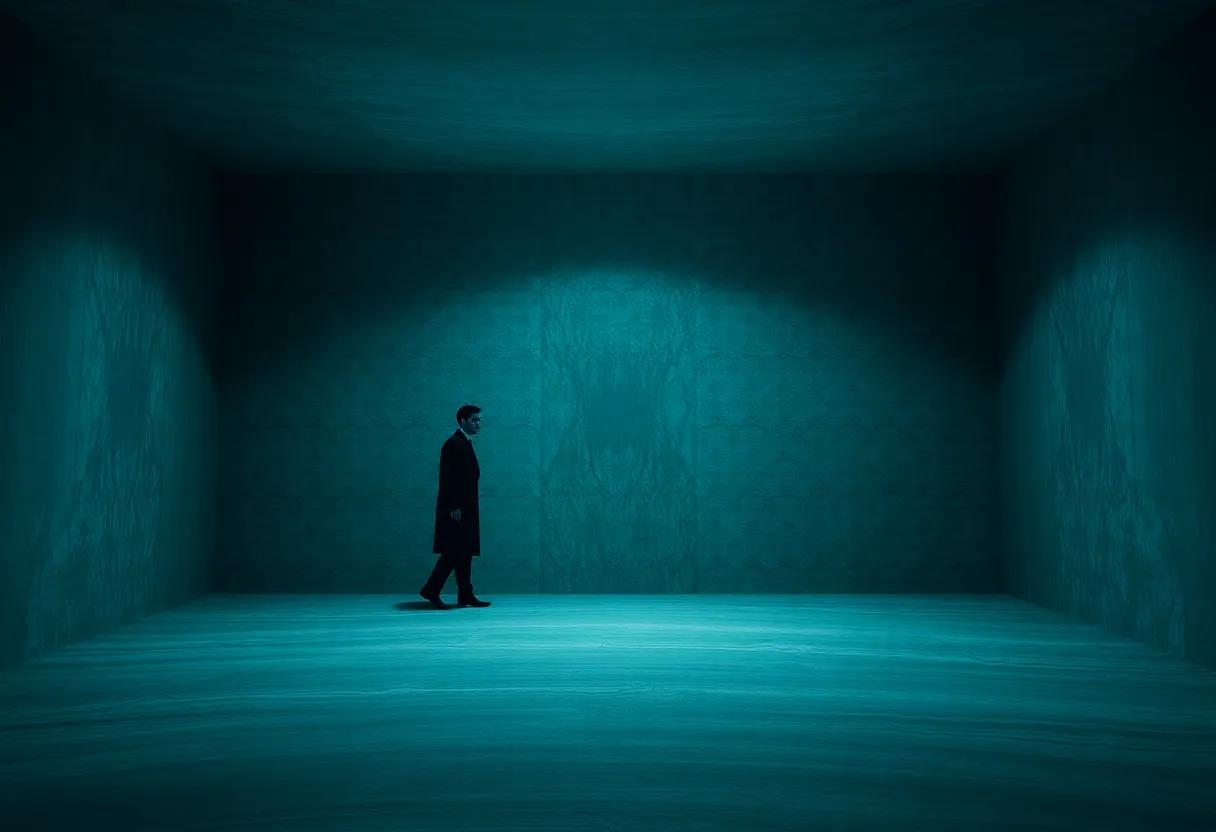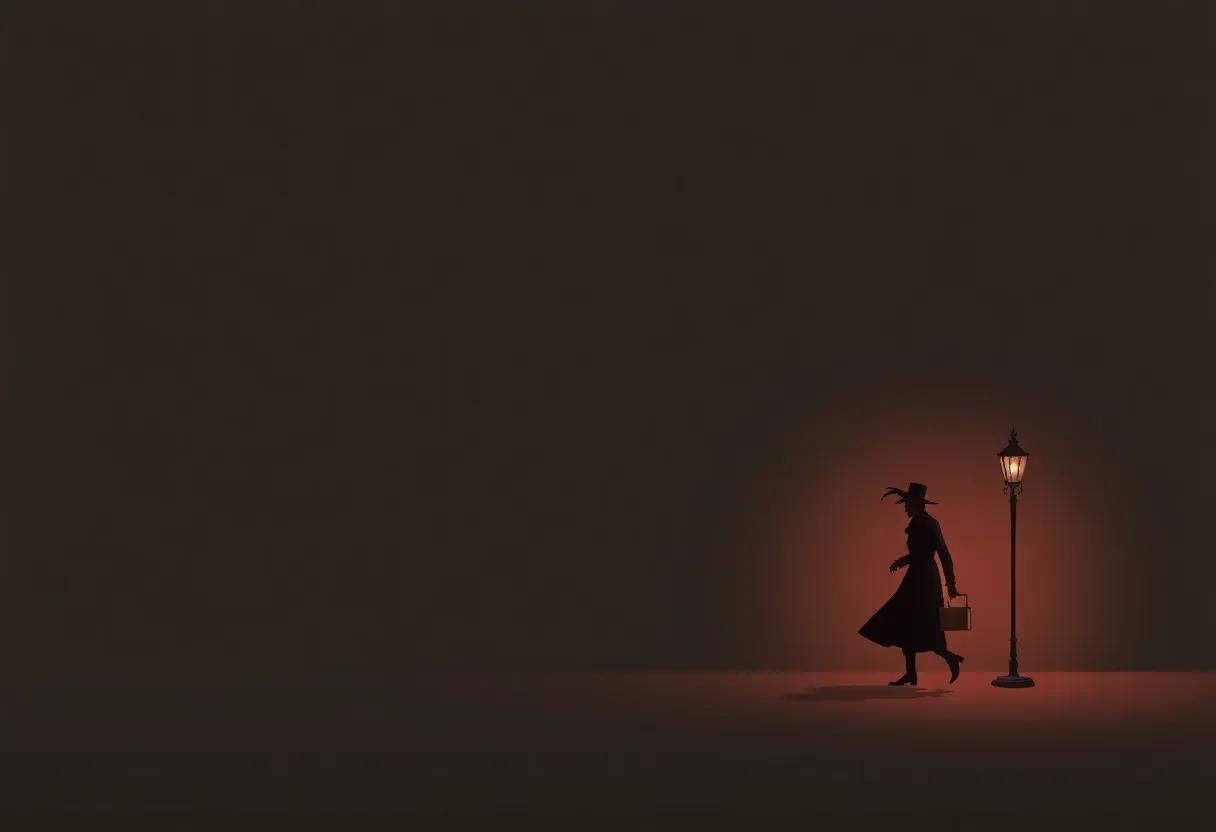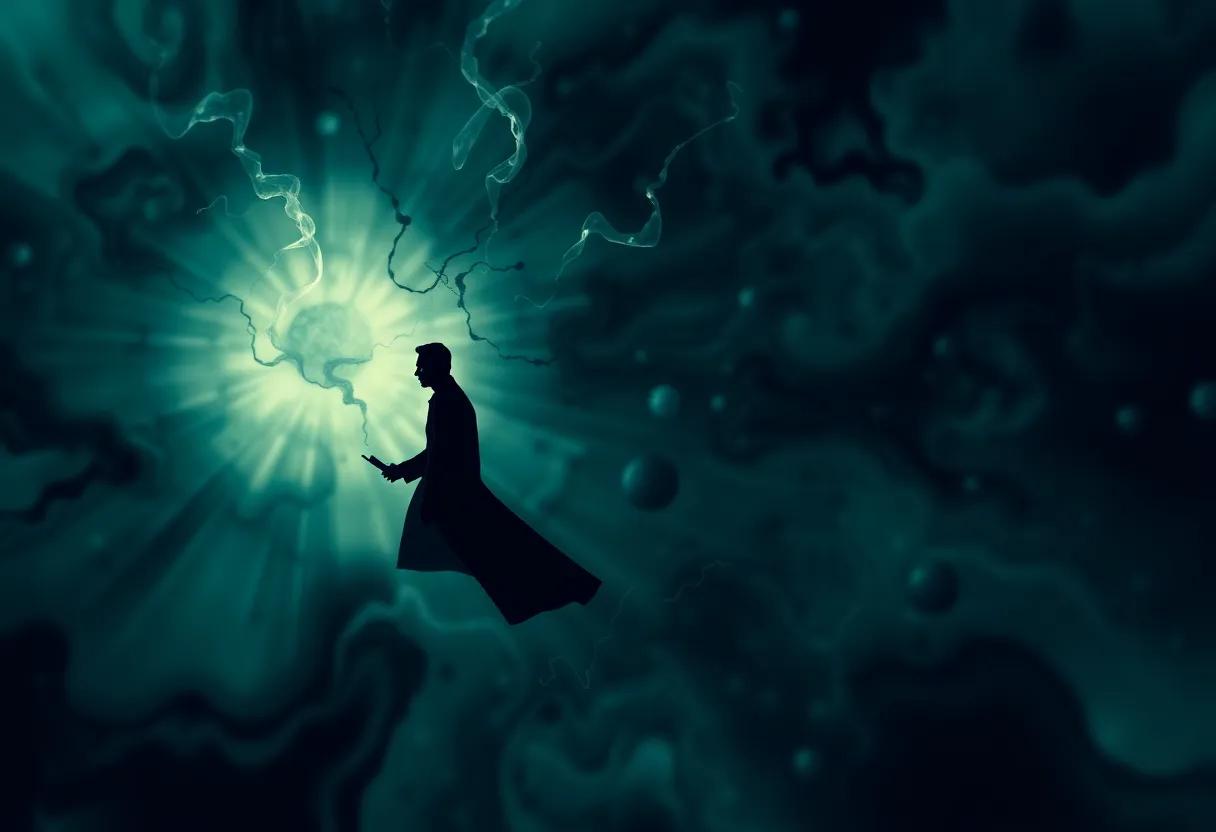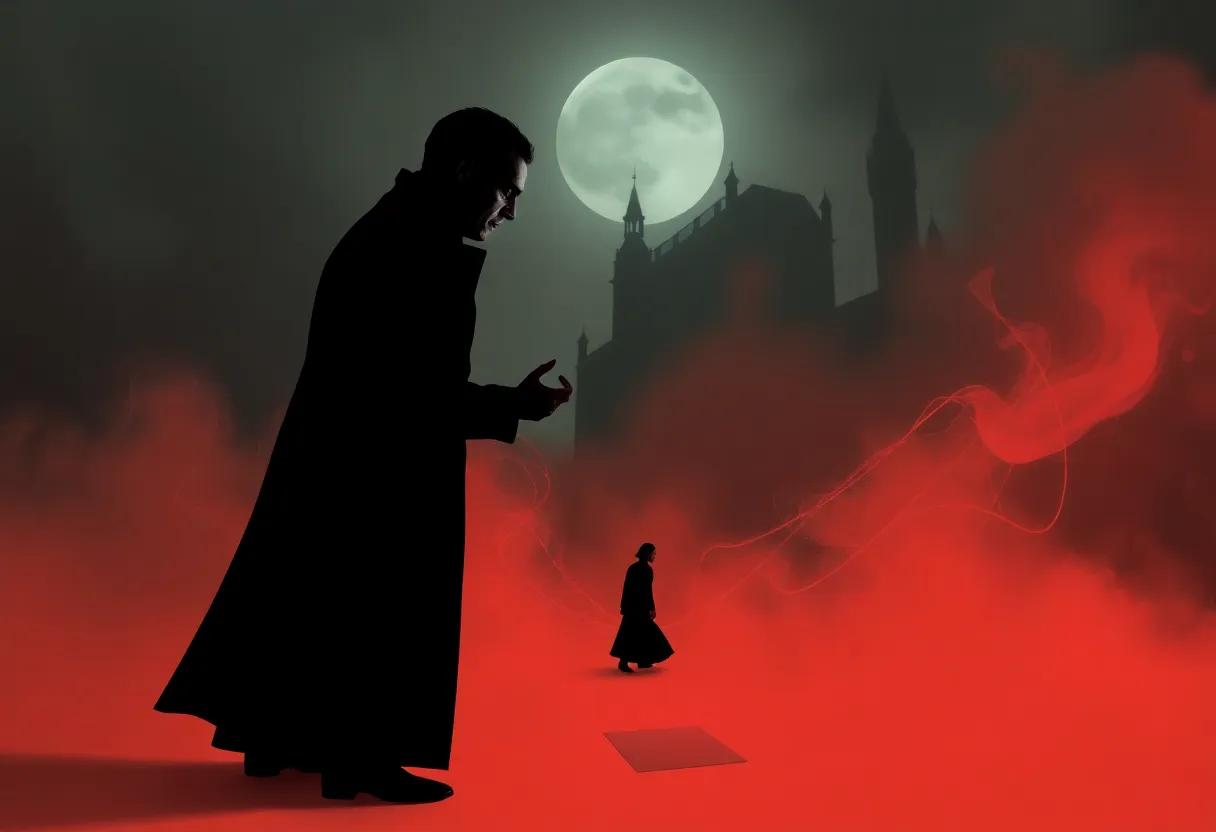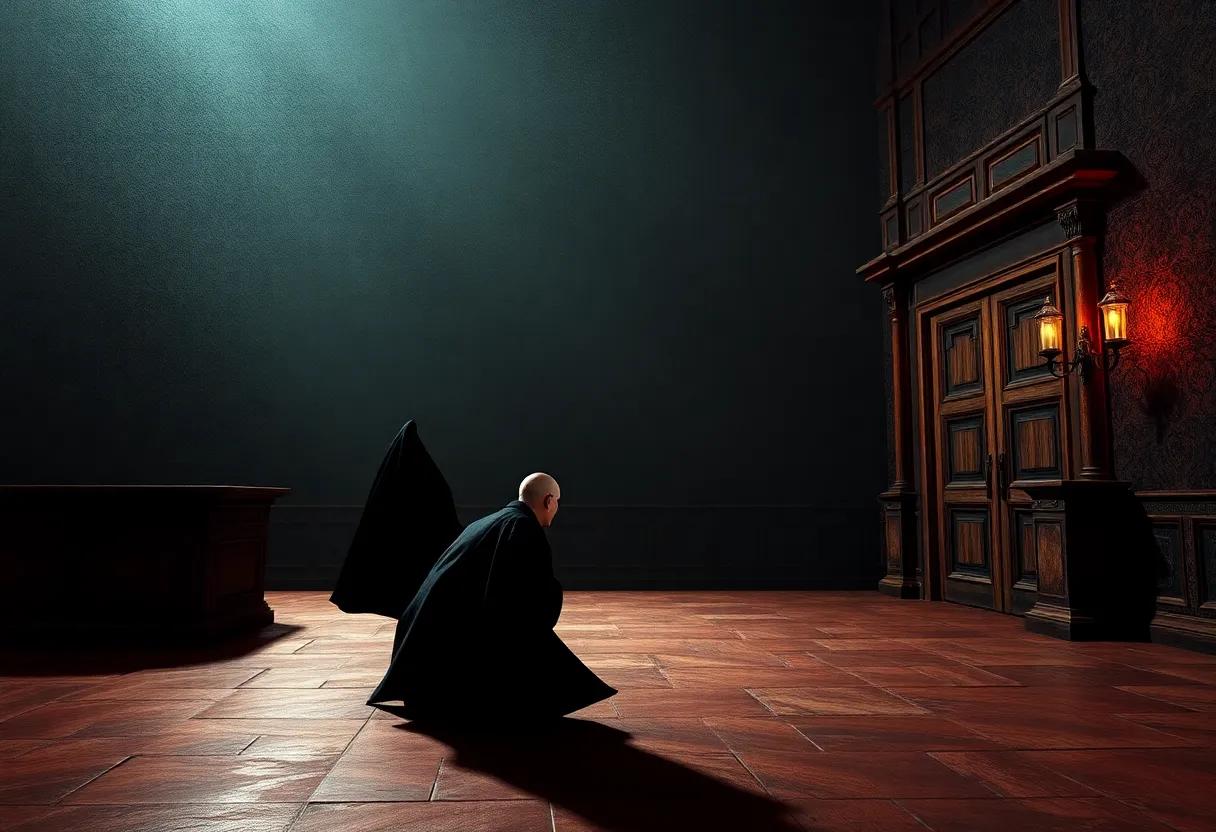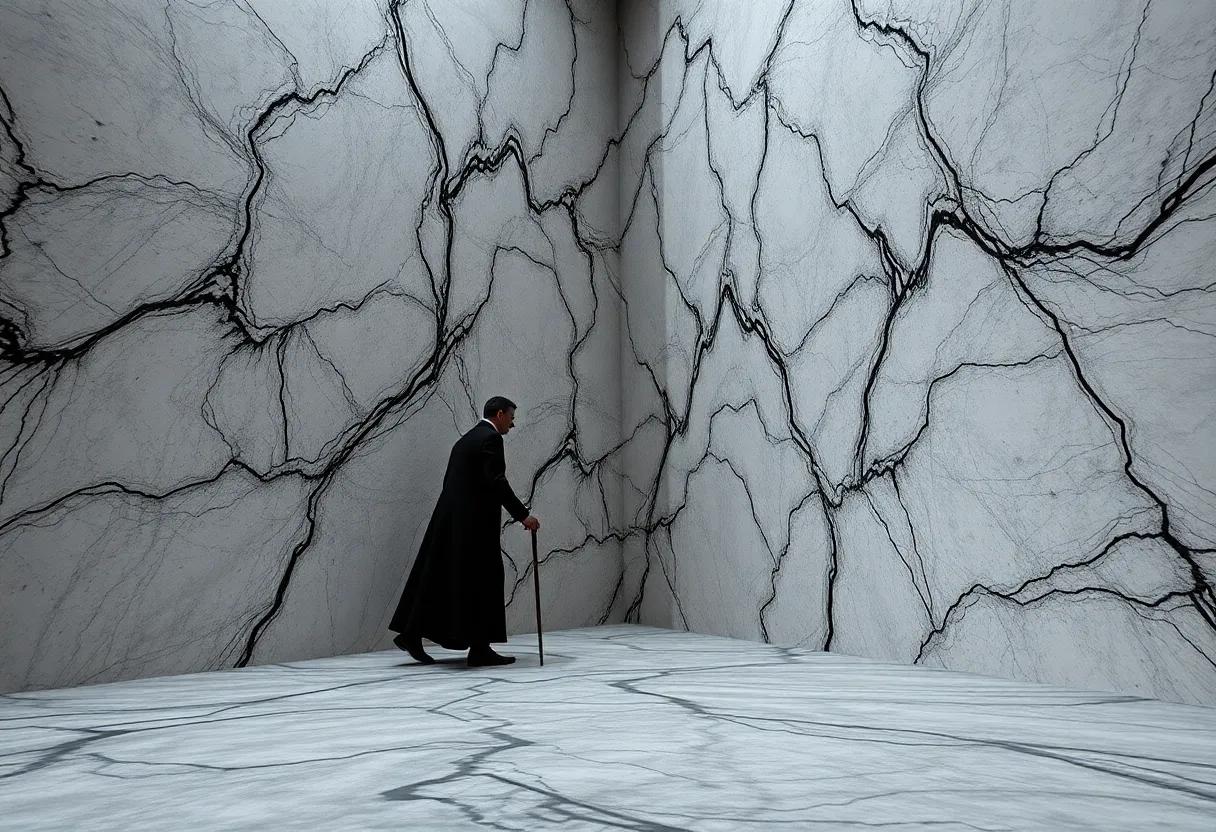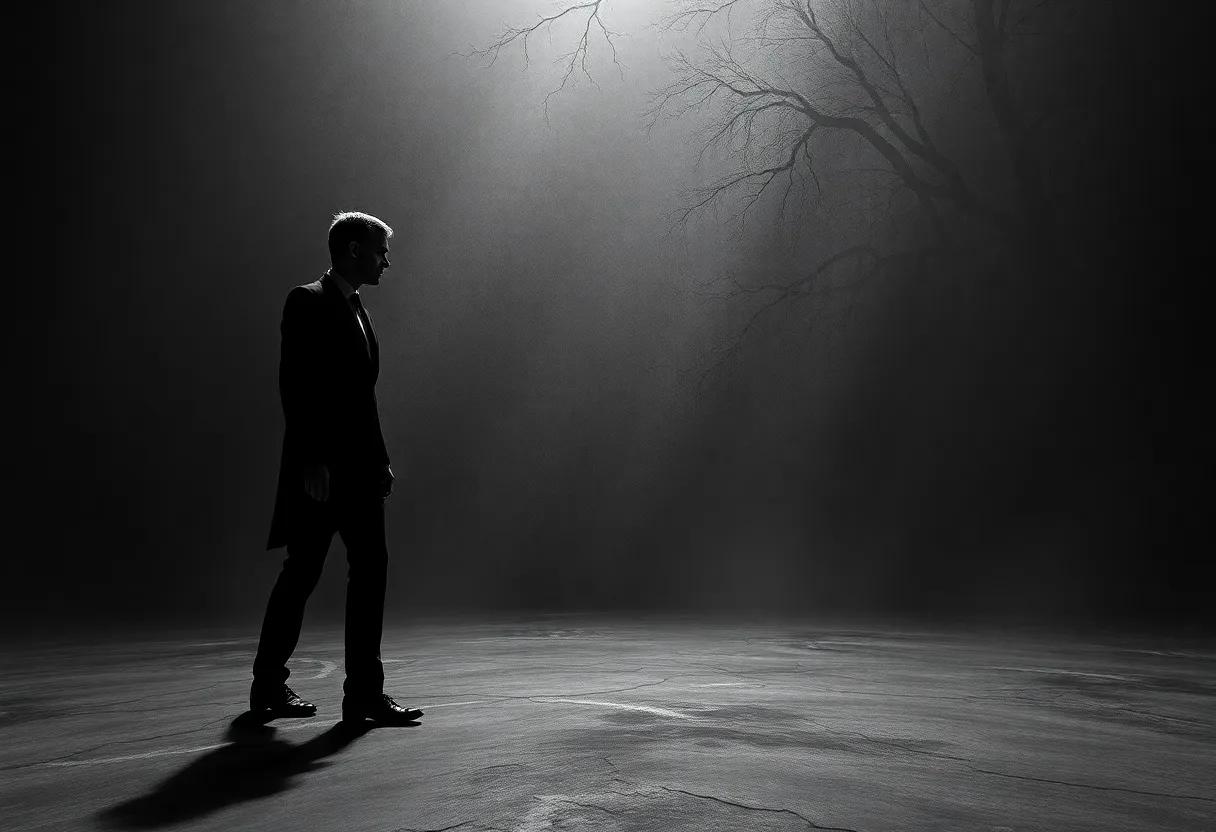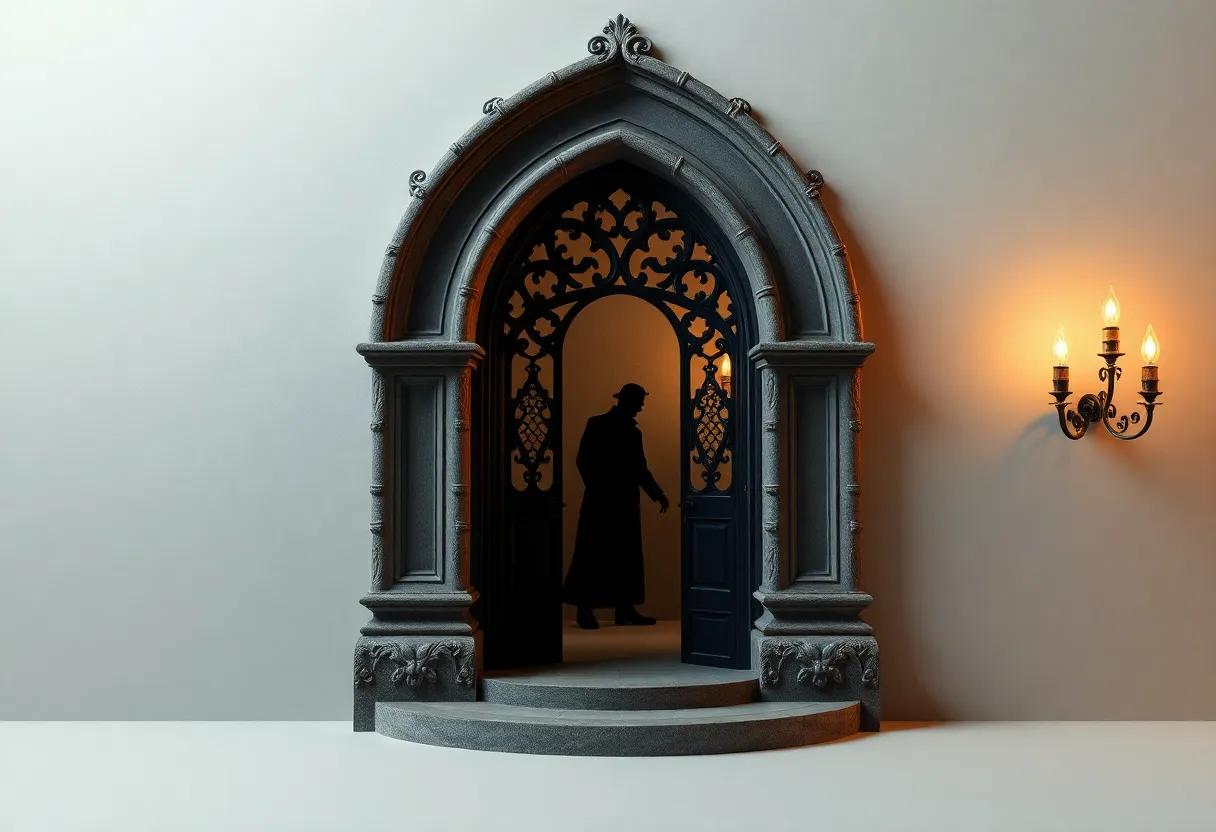in the labyrinth of human nature, where light intermingles with shadow, Robert Louis Stevenson artfully delves into the complexities of identity and morality. “” invites readers to traverse these enigmatic corridors, exploring the intricate relationship between the civilized self and the primal instinct lurking beneath the surface. Stevenson’s timeless narrative of Dr. Jekyll and Mr. Hyde,alongside a carefully curated selection of his other haunting tales,serves as a mirror reflecting the darker facets of humanity. In this review, we will unravel the threads of duality woven through these gothic narratives, examining how Stevenson captures the delicate balance between societal expectations and the chaos of our innermost desires. As we journey through these chilling tales, we might just find ourselves questioning the very nature of good and evil, and the shadows that dwell within us all.
Exploring the Psychological Depths of Jekyll and Hyde
Stevenson’s Jekyll and Hyde delves into the complexities of the human psyche, illuminating the constant battle between our innate virtues and vices. The story illustrates a dichotomy that exists within each individual, questioning the nature of identity and morality. As Dr. Jekyll explores the darker side of his personality through the embodiment of Edward Hyde, readers are invited to consider the following themes:
- Identity Crisis: Jekyll’s change raises questions about the essence of self. Can a person truly compartmentalize their nature?
- moral Duality: The coexistence of good and evil within humanity provokes reflection on societal views of morality.
- The Effects of Repression: The narrative suggests that denying one’s darker impulses can lead to disastrous consequences.
The psychological depth of the novella conjures a tableau of human experience that transcends its Victorian context. Jekyll’s experiments form a cautionary tale about the perils of unchecked ambition and the desire to reconcile one’s conflicting personas. to better understand these elements, consider the following framework:
| Character | Symbolism | Psychological Insight |
|---|---|---|
| Dr. jekyll | Duality of Nature | Struggle for control over one’s impulses. |
| Mr. Hyde | Repressed Desires | Embodiment of chaos and moral corruption. |
| Utterson | Societal Norms | Represents reason and the pursuit of understanding. |
The Intriguing Nature of Duality in Stevenson’s Narrative
Stevenson’s narrative masterfully explores the dichotomy of human nature, weaving a tapestry that reflects the struggle between societal expectations and the innate desires lurking beneath the surface. By juxtaposing the refined Dr. Jekyll with the monstrous Mr. Hyde, Stevenson encapsulates the internal conflict that defines humanity.This duality presents itself not simply as a battle between good and evil, but as a profound commentary on the complexity of identity. Readers are compelled to confront the unsettling notion that within each individual lies a spectrum of morality, where the potential for darkness coexists with the light.
To further illuminate this theme, one can draw parallels to various characters throughout Stevenson’s tales, each embodying a distinct facet of duality. The following table highlights key characters and their associated traits, revealing how each contributes to the overarching narrative of human duality:
| Character | aspect of Duality | Symbolic Representation |
|---|---|---|
| Dr.Jekyll | Restraint and Respectability | Society’s Expectations |
| Mr. Hyde | Chaos and Freedom | The Repressed Self |
| Utterson | Law and Order | Conscience |
This exploration of duality serves not only to engage the reader in a psychological battle but also prompts a deeper reflection on their own nature. Each character, in their struggle with the light and dark within themselves, invites the audience to examine the societal norms that shape their identities while acknowledging the human propensity for conflict. By engaging with these dualities, the reader embarks on a journey through the labyrinth of their consciousness, confronting the profound and ofen unsettling truths about what it means to be human.
Classic Themes Reimagined: A Fresh Perspective on Human Nature
in Robert Louis Stevenson’s collection, the exploration of duality serves not only as a chilling narrative device but as a profound commentary on the complexities of human nature. Characters like Dr. Jekyll and Mr. Hyde embody the eternal struggle between virtue and vice, compelling readers to confront the darker aspects of their psyche. By shifting focus from outright morality to an internal dialog, Stevenson artfully illustrates that good and evil are not absolute, but instead coexist within each individual. this perspective invites a deeper examination of what drives human behavior, encouraging us to reflect on our own moral choices and the multitude of influences that shape them.
This reimagined approach to familiar motifs provides fertile ground for discussion regarding the impact of societal pressures on personal identity. The narratives reveal how external expectations can warp one’s sense of self, leading individuals to create masks that conceal their true selves. By weaving together the eerie tales of transformations and hidden depths, Stevenson prompts us to consider:
- What is the price of repression?
- Can true identity ever be fully expressed?
- How do we navigate the shadows that lurk within us?
These questions resonate as timeless themes, forcing readers to confront the disquieting reality that the monster might potentially be closer than we dare to acknowledge.
Chilling Tales: The Art of Suspense in Diverse Narratives
In Robert Louis Stevenson’s masterful narrative, the interplay between the duality of human nature is explored through the chilling transformation of Dr. Jekyll into Mr. Hyde. This metamorphosis not only captivates the reader but also serves as a commentary on the darker corners of the human psyche. Stevenson crafts this suspense with an ingenious blend of atmospheric tension and the psychological unraveling of his characters. as the story proceeds, the subtle hints of impending doom keep readers on edge, igniting their curiosity and inviting them to ponder the age-old question of morality versus desire.
The spectrum of chilling tales extends beyond Stevenson’s classic, inviting a rich array of narratives that deliver suspense through various lenses. From the haunting prose of Edgar Allan Poe, who revels in the macabre, to the modern-day thrillers that dissect the human experience, these stories serve as a medium for exploring fear and morality. Key elements that enhance the suspense in these narratives include:
- Unreliable Narrators: Characters that lead readers astray.
- Atmospheric Settings: Eerie landscapes that reflect inner turmoil.
- Temporal distortion: Non-linear timelines creating disorientation.
| Author | Work | Theme |
|---|---|---|
| Robert Louis Stevenson | Dr. Jekyll and Mr. Hyde | Duality of Nature |
| Edgar Allan Poe | The Tell-Tale Heart | Guilt and Madness |
| Daphne du Maurier | Rebecca | Jealousy and Identity |
Through these chilling tales, readers are not merely entertained but also invited to confront their own fears and moral dilemmas. The art of suspense lies in its ability to resonate with the audience, drawing them into a labyrinth of intrigue and reflective thought.each story acts as a mirror, compelling us to examine the darker aspects of our humanity, ensuring that the impact of these narratives lingers long after the last page is turned.
Character Analysis: Understanding Jekyll, Hyde, and Their Complexities
In Robert Louis stevenson’s masterful narrative, the relationship between Dr. Jekyll and Mr. Hyde unveils the intricate struggles of human duality. On one hand, Dr. Jekyll embodies the pursuit of scientific exploration,a man eager to unlock the secrets of the human psyche and rid himself of societal constraints. His noble intentions, though, succumb to the darker impulses embodied by Mr. Hyde, a figure of pure malevolence that relishes in chaos and moral ambiguity. Jekyll’s transformation into Hyde is a chilling representation of how easily good can be eclipsed by evil, reflecting the complexities of inner conflict that lie within us all. The dichotomy serves not only as a horror tale but also as a profound commentary on the dual nature of humanity itself.
As we delve deeper into the psyche of these characters, we observe key traits that define their existence. Dr.Jekyll’s charm and intelligence contrast startlingly with Hyde’s brutality and savagery, leading us to ponder the question: can one exist without the other? The table below illustrates some of these contrasting attributes:
| Character | Attributes |
|---|---|
| Dr. Jekyll |
|
| Mr. Hyde |
|
This duality raises profound questions about identity and societal expectations. Can we separate our darker inclinations from our noble aspirations, or are they two sides of the same coin? The captivating journey through Jekyll’s experiments leaves readers grappling with their own complexities, forcing us to confront the beasts that may reside within us all.
The Role of Victorian society in Shaping Morality and Fear
The Victorian era, often celebrated for its industrial progress and cultural achievements, was equally characterized by a profound ambivalence towards morality and human behavior. In this context, the clash between social respectability and inner desires became a fertile ground for anxiety and fear. The rigid moral structures imposed by society often pressured individuals to conform outwardly, while their internal conflicts festered beneath the surface. Stevenson masterfully highlights this struggle in his novella, where Jekyll’s transformation into Hyde serves as a metaphor for the hidden, primal instincts that lurked within the genteel facade of Victorian society.The exploration of duality becomes a lens through which readers can interpret the era’s deep-seated anxieties about morality, respectability, and the fear of the ‘other’—both within and without.
The tension between public personas and private actions manifested itself not only in literature but also in the daily lives of Victorians. To better understand this duality, consider the following aspects:
- Hypocrisy: Many victorians led double lives, adhering to strict moral codes while secretly indulging in vices.
- Fear of Scandal: the threat of exposure loomed large, as social reputation was paramount in Victorian society.
- Gender Roles: Expectations placed upon men and women created a chasm between societal ideals and personal truths.
furthermore, the interplay between morality and fear is vividly illustrated in Stevenson’s portrayal of societal repercussions for transgressions. The following table encapsulates key themes related to this duality:
| Theme | Impact on Society |
|---|---|
| Reputation | Social standing dictated by public perception; a fall from grace often resulted in ostracism. |
| Repression | Emphasis on propriety led to emotional and psychological repression among individuals. |
| fear | An ever-present dread of being ‘found out’ fostered an atmosphere of paranoia. |
Imagery and Symbolism: The Power of Descriptive Language
Stevenson immerses readers in a vivid world where every description serves a dual purpose, reflecting the internal struggles of his characters. The use of darkness and light serves not merely as a backdrop but as a representation of good and evil,encapsulating the duality of Jekyll and Hyde. For instance, the grim and gloomy settings of the city mirror the conflicted psychology of Dr. Jekyll, while the sporadic bursts of color symbolize fleeting moments of morality. Such contrasts engage the reader’s senses, leading them through the shadowy streets of London, where every corner hints at the monstrous work of Hyde. This detailed descriptive language not only enhances the story’s tension but also invokes deeper philosophical questions about identity and morality.
Moreover, the symbolism embedded within the narrative serves as a powerful tool, enriching the themes of isolation and transformation. Key objects, such as the potion and the door to jekyll’s laboratory, stand as metaphors for the thin veneer of civility that masks humanity’s inherent savagery. To emphasize this, consider the following table highlighting significant symbols and their meanings:
| Symbol | Meaning |
|---|---|
| The Potion | Transformation between good and evil |
| Jekyll’s Home | Facade of respectability |
| The Door | Access to hidden desires |
Thus, through intricate imagery and profound symbolism, Stevenson crafts a chilling tale that remains resonant, asking us to confront the darkness lurking within while challenging societal norms.The seamless integration of these elements ensures that the story is not merely read but experienced, leaving a lasting imprint on the reader’s psyche.
Comparative Analysis: Jekyll and Hyde Versus Other Works
In the world of literature, the theme of duality serves as a powerful lens through which we can explore the darker facets of human nature, as vividly illustrated in Stevenson’s masterpiece. The tumultuous relationship between Jekyll and Hyde raises questions about morality, identity, and the struggle between societal expectations and primal instincts. other notable works delve into similar themes, offering a rich tapestry of character complexities:
- Frankenstein by Mary Shelley – Focuses on the dichotomy between creator and creation, highlighting the consequences of unchecked ambition.
- The Picture of Dorian Gray by Oscar Wilde – Explores the conflict between external beauty and internal corruption through the lens of performance and hedonism.
- Dracula by Bram Stoker – Investigates the duality of human nature through the vampire’s seduction as both a monster and a tragic figure.
To better understand these parallels, we can visualize the thematic connections through a comparative analysis:
| Work | Thematic Focus | Character Conflict |
|---|---|---|
| Jekyll and Hyde | Duality of man | Internal vs. External self |
| Frankenstein | Creation and Responsibility | Creator vs. Creation |
| The Picture of Dorian Gray | Beauty vs. Morality | Self vs. Society |
| Dracula | Monstrous vs. Human | Desire vs. Horror |
Through this exploration, it becomes evident that Jekyll and Hyde is not an isolated phenomenon, but rather part of a broader literary tradition that interrogates the complexities and contradictions inherent in humanity. Each narrative serves as a mirror,reflecting our own struggles with light and darkness,compelling readers to confront the duality within themselves.
Stevenson’s Unique Style and Its Effect on Narrative Flow
stevenson’s narrative technique unveils a distinct interplay of contrasting elements that draws readers into the psychological depths of his characters. Through the use of vivid imagery, shifting perspectives, and an artful layering of tension, he creates a dynamic flow that keeps audiences on the edge of their seats. His careful construction of settings, such as the fog-laden streets of Victorian London, reflects the internal struggle of Dr. Jekyll and Mr. Hyde,amplifying the sense of duality in the narrative. Stevenson’s ability to oscillate between different viewpoints not only enriches the experience but also encourages readers to engage in a deeper analysis of morality and identity, propelling the narrative forward in unexpected ways.
Moreover, the rhythmic quality of his prose punctuates key moments with a sense of urgency and foreboding. By meticulously employing variations in sentence structure, he evokes heightened emotions and mirrors the chaos within his characters. The fluctuations in tone create a pulse that drives the story onward, making it impossible to predict the outcome. The following table summarizes some of the key elements of stevenson’s unique style that contribute to his extraordinary narrative flow:
| Element | Effect |
|---|---|
| Imagery | Enhances emotional depth and setting |
| Pacing | Creates suspense and maintains reader engagement |
| Perspective Shifts | Enriches character complexity and thematic exploration |
| Sentence Structure | Influences rhythm and emotional intensity |
The Influence of gothic Elements in Stevenson’s Tales
Stevenson’s narratives are profoundly steeped in gothic motifs,which serve to explore the psychological complexities of his characters. The haunting atmosphere, combined with elements such as dark, foreboding settings and the supernatural, provides a canvas for the inner turmoil that defines the struggle between good and evil. In Jekyll and Hyde, the eerie London streets become a reflection of the duality within Dr. jekyll, where shadowy alleys symbolize the dark urges threatening to overshadow his benevolent nature. The presence of the grotesque, especially in Hyde’s violent behaviors, taps into the primal fears of the Victorian era, capturing the audience’s fascination with the uncanny and the monstrous aspects of humanity.
The psychological depth of Stevenson’s work is further accentuated by the use of gothic symbolism, which evokes an atmosphere of dread and moral ambiguity. Through characters like Mr. Hyde, Stevenson delves into the abyss of identity fragmentation, reflecting societal anxieties regarding the self.Consider the following elements that underscore this gothic influence:
- Isolation: Characters often find themselves alone in a world filled with darkness.
- Dualism: The struggle between the civilized self and primal instincts.
- Supernatural occurrences: Mysterious forces that manipulate fate and morality.
Such elements combine to create an uncanny sense of foreboding, leading readers to question not only the natures of Jekyll and Hyde but also the broader implications of their own identities. Through this lens, Stevenson invites an exploration of the boundaries between the known and the unknown, prompting a reflection on the intertwining of morality, society, and the human psyche.
Reader Engagement: Why These Stories Continue to Captivate
Stories that delve into the complexities of human nature, such as Stevenson’s iconic duality of Jekyll and Hyde, resonate deeply with readers. These narratives challenge our understanding of morality and the self, presenting characters torn between their innermost desires and societal expectations. The psychological tension and moral ambiguity keep audiences captivated, allowing them to reflect on the darker facets of their own identities. Elements that enhance this engagement include:
- Relatable Conflict: The internal struggle of Jekyll serves as a mirror for our own battles with temptation and ethics.
- Atmospheric Writing: Vivid descriptions immerse readers in a world where the line between good and evil blurs seamlessly.
- Universal Themes: Concepts of duality and the human condition resonate across cultures and eras, making the stories timeless.
The beauty of these tales lies not only in their gripping narratives but also in their ability to provoke thought and conversation long after the last page is turned. Characters like Hyde compel us to confront unsettling truths about the human psyche, prompting discussions about the nature of evil and redemption. A comparative look at these chilling tales reveals a consistent pattern that engages readers:
| Story | Thematic Element | Reader Reaction |
|---|---|---|
| Jekyll and Hyde | Duality | Intrigued by Moral Complexity |
| The Tell-Tale Heart | Guilt | Affected by Psychological Tension |
| Frankenstein | Creation and Result | apprehensive about scientific Realities |
Hidden Messages: The Ethical Dilemmas of Science and Morality
Stevenson’s narrative intertwines the pursuit of scientific discovery with profound ethical questions, laying bare the complex duality of human nature. In his iconic tale, the transformation of dr. Jekyll into Mr. Hyde invites readers to consider the repercussions of unchecked ambition and the moral ambiguities inherent in scientific exploration. The character of Jekyll embodies the noble aim of expanding human understanding, yet this quest leads him down a treacherous path where moral integrity dissipates. through this tragic metamorphosis, Stevenson prompts us to ask ourselves:
- What boundaries should science respect?
- is the pursuit of knowledge worth the sacrifice of morality?
- Can the duality of human nature be reconciled?
As we venture further into the chilling tales woven by Stevenson, the ethical dilemmas become a mirror reflecting contemporary debates surrounding scientific innovation. The dance between progress and principle raises critical considerations in fields such as genetic engineering and artificial intelligence. As technology advances, Stevenson’s work serves as a poignant reminder of the need for ethical frameworks that can guide us through the labyrinthine consequences of our inventions. In this context, let us reflect on the balance that must be achieved:
| Scientific Innovation | Ethical Concern |
|---|---|
| Genetic Editing | Unintended Consequences |
| Artificial intelligence | Bias and Autonomy |
| Biotechnology | Consent and Safety |
A Reflection on the Legacy of Robert Louis Stevenson in Literature
Robert louis Stevenson’s work transcends his era,offering profound insights into the complexities of human nature. His ability to weave the threads of dualism—the coexistence of good and evil—within his characters is particularly pronounced in Strange Case of Dr Jekyll and Mr Hyde. This novella serves not only as a gripping tale of transformation but also as a poignant reminder of the moral dilemmas that plague humanity. Through Jekyll’s internal struggle, Stevenson exquisitely captures the essence of identity and the societal constraints that shape our existence, prompting readers to question the true nature of self.Such themes resonate deeply in modern literature, showcasing Stevenson’s lasting impact on the genre and his skill in inviting readers to explore the dark recesses of the mind.
furthermore,Stevenson’s contributions extend beyond Jekyll and Hyde,as his collection of chilling tales offers a rich tapestry of human experience intertwined with the supernatural. Notable stories like The Body Snatcher and The Bottle Imp delve into the moral consequences of choices, echoing the central theme of duality inherent in all his works. The following table highlights key elements within these tales that foster Stevenson’s legacy:
| Title | Main Theme | key Element |
|---|---|---|
| Jekyll and Hyde | Identity & Duality | Transformation |
| The Body Snatcher | Moral Ambiguity | Grave Robbing |
| The Bottle Imp | Desire & Consequence | Wishes |
Through these narratives, Stevenson challenges readers to confront their own moral complexities and the repercussions of their desires, leaving a legacy that continues to influence and inspire writers and thinkers alike. His exploration of the human psyche and the perpetual battle between light and shadow underscores the inherent tension in our existence and remains a vital part of our literary discourse.
In Retrospect
In the tapestry of literature, where shadows dance with light, “” serves as a thoughtful guide through the labyrinth of Robert Louis Stevenson’s mind. As we close this chapter, we find ourselves not merely spectators of his haunting narratives but rather participants in an exploration of our own complexities. Stevenson deftly weaves themes of duality and morality, encouraging us to confront the darker facets that linger within us all. This review has illuminated the intricacies of his work, revealing the rich layers of meaning that invite readers to ponder their own identities. As we step away from the pages of this enlightening examination, let us carry forward the lingering questions it provokes, embracing the dualities that shape our shared human experience.

